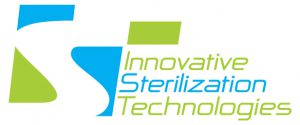The global pandemic has dramatically underscored the value of infection control protocols. But, already there had been new emphasis on infection prevention and reducing readmissions due to healthcare-acquired infections — and so more attention than ever on endoscope reprocessing, says Mary Ann Drosnock, manager of clinical education for endoscopy with Healthmark Industries.
“I feel like these devices are getting the attention that they didn’t necessarily get before,” says Drosnock, who also was part of the group responsible for writing the AAMI Document ST91, the national standard for flexible and semi-rigid endoscope reprocessing in healthcare facilities. “And that is so important now for it to be in the forefront of everyone’s minds.”
Drosnock made her comments in a recent Beyond Clean podcast noting that flexible and semi-rigid endoscopes including ENT, bronchoscopes, cystoscopes, ureteroscopes and others fall under the Spaulding semi-critical classification.
“What many people don’t understand is this classification system has always said that semi-critical devices should be sterilized,” she says. “And if that’s not technically feasible, then we would fall to high-level disinfection as the standard of care. But over the years, I think that industry and healthcare facilities have just resorted to high-level disinfection of these scopes without really knowing that the original intent of the Spaulding classification system was that semi-critical devices would be sterilized.”
The ST91 document holds everyone across the nation accountable to the same standard of care because it applies to all flexible and semi-rigid scopes, she says.
“So, we’re not saying something different for GI scopes versus bronchoscopes or cystoscopes,” she says. “It really levels the playing field as far as what’s expected for quality, what’s expected for best practices. And the other great thing about ST91 is it is applicable to all healthcare settings. So, we’re not expecting a higher standard of care in a hospital setting versus what’s done in a standalone ambulatory surgery center or even in a physician’s office.”
A recent communication from the U.S. Food and Drug Administration makes the message clear specifically for flexible bronchoscopes, recommending that healthcare facilities use sterilization, rather than high-level disinfection when possible, because “sterilization has a greater safety margin than high-level disinfection.” It goes further to say that in cases where there is “no support for immediate reprocessing,” providers should consider using single-use bronchoscopes. The disposable devices should also be considered when there is increased risk of spreading infection and when treating COVID-19 patients, the FDA wrote.
As powerful as sterilization is, it never excuses poor cleaning processes, Drosnock noted.
“Soil has to be physically removed from the endoscope or any other medical device before it goes into the sterilization method,” she says.
Key to properly monitoring reusable scopes is determining whether there is residual soil after cleaning that could potentially impair disinfection or sterilization, she says. If there is a positive result, that means there is soil remaining.
“You simply reclean that scope,” she says. “You do the whole manual cleaning process over again and retest it. And then if it passes, you can move on to disinfection or sterilization. If it doesn’t pass, it goes back through cleaning again.”
Drosnock says the process should be conducted each time.
“That’s something we owe to our patients,” she says. “There are very little quality parameters and feedback mechanisms built into scope reprocessing, especially on a high-level disinfection side of it. …If we can implement that every time, that would be the best scenario.”
Stay engaged on trending topics in the healthcare space and have access to articles, exciting news, and educational content by subscribing to our Blog!
If you would like FREE Online Continuing Education Credits (CE’s) visit our CE Page!
ONE TRAY® and EZ-TRAX™- Efficient, Effective, Economical
Follow us on Facebook or connect with us on LinkedIn. You can also join our ONE TRAY® Questions Page on Facebookor LinkedIn where you can ask any questions you have, any time of day, and get answers from industry experts.

